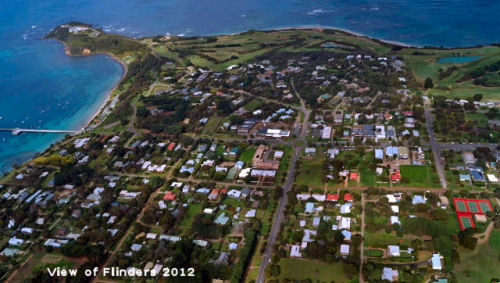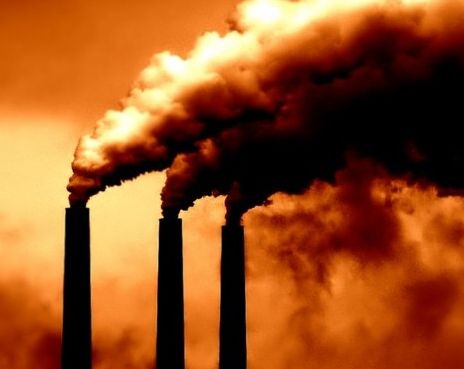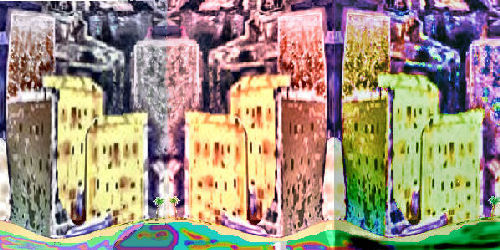Today Treasurer Wayne Swan has tried to justify another rise in interest rates by claiming in true polly-speak that such an impost is a sign of a stronger Australian economy. Swan’s growth fettish belies the LibLab's stale 20th Century baby-boomer ideology. Last month Swan's fettish for strong economic growth and strong population growth for Australia was reaffirmed at the Population Summit in Brisbane held 30th March 2010.
But Swan's growth fettish and consequential rising costs of living do not augur well for most Australians with mortgages.

Swan on the issue of Australia’s current record population growth claims:
“a population cap would compound, not solve, the growth challenges Australia faces.”
“Capping growth over the next 40 years at 0.8 per cent instead of the 1.2 per cent projected would wipe 17 per cent off the nation's gross domestic product by 2050.”
“Restricting population growth in fast-growing southeast Queensland would result in regional product on a per capita basis dropping by 5 per cent.”
“Australia faced a steep decline in workforce participation due to ageing, which would hit growth and government revenue while dramatically pushing up health spending. Boosting productivity would be critical in coping with the ageing trend.”
Swan premised that economic and population growth can only be good for Australia and the task is for Australia to learn how to "grow smarter".
But Swan only sees the economic data yet has no broader social plan. Swan promises to protect national living standards and environmental sustainability, without saying how he can do this.
This is on the back of Prime Minister Rudd infamous October 2009 pronoucement:
"I actually believe in a big Australia I make no apology for that. I actually think it's good news that our population is growing."
It made Australians reel in fear.
On uttering that dire portent, Rudd cast the demise of Australian lifestyle, inviting hoards of legalised arrivals. And neither Rudd nor Swan offers any plans for coping with this enlarged population – no plans for sustainability, infrastructure and maintaining the Australian quality of life. Both are blinkered to the narrow economic interpretations and have lost sight of the social and environmental consequences of high population growth. Rudd’s response on the run is:
"That is why we're taking a leading position on climate change but also the long-term sustainability of the Murray-Darling and the proper provision of water supplies for the future. "This Government is building for the future - we call it nation-building for the future.”
What crap. Some future. Interests rates have just gone up again and are set to continue only exacerbating house unaffordability, the cost of living and degrading Australian living standards. Australian cities have run out of potable water, so billions in taxes are going into desalination plants. Utility charges are going up. Energy Australia is set to raise electricity prices by 60% over the next three years in order to fund Sydney’s massive electricity infrastructure to catch up with the growing urban sprawl. Roads are congested in Melbourne, Brisbane and Sydney. Public transport is old and overloaded.
Swan's and Rudd’s Hong Kong vision for Australia does a not sit well with most Australians. Neither Labor or Liberal have no mandate to impose a growth fettish on Australians. Most Australians already feel that our environment can not cope with a larger population. Treasury’s projection of a population of 35 million by 2050 is obscene.
Back in October 2009, even Federal Treasury head Ken Henry expressed concern that Australia would not be able to sustain a predicted 60 per cent growth in population over the next four decades.
Prosperity is not aggregate GDP figures. It is maintaining and improving the quality of life and standard of living per capita. Swan being a numbers man hasn’t worked out how to measure that so he ignores it. Rudd’s Labor Government has run out of ideas and ideology relevant to Australians.

Rudd’s initiating the role of Minister for Population this month doesn’t change his 'Big Australia' vision, but just wastes more taxpayer money to find a way to justify and spread the 35 million. hardly a priority, population features in Mr Burke's mixed bucked portfolio of Agriculture, Fisheries and Forestry. his only mandate is to deliver some population strategy in 12 months, after the election. Clearly, this is purely electioneering appeasement to disaffected Labor voters. Rudd has responded tokenly to Greens leader, Senator Bob Brown’s proposal for a Senate inquiry into Australia's population. Rudd's population minister appointment effectively hijacks what ought to be an independent review process.
And NSW Labor puppet, Premier Keneally expectedly tows the Labor line: ''I believe Sydney can grow and can grow sustainably, economically and environmentally...Cities can either grow or they can shrink. Shrinking is not an option for Sydney.'' While NSW Liberal planning spokesman, Brad Hazzard, ducked the migration issue saying it was being discussed in the community as Sydney became more crowded.
The Liberal-National Coalition are little different in their ideological response. They listen to Howard’s old Productivity Commission which strangely enough advocates for more productivity and with that more population. The Opposition wants an independent specialist body to inquire into future policies dealing with Australia's population growth – just like the Productivity Commission. Otherwise these listen to self-serving growth fettish extremists the Urban Taskforce.
Not surprisingly, Urban Taskforce chief executive Aaron Gadiel argues for no cap on immigration and says:
"One of the reasons that we don't have the infrastructure that we all want and expect is that in many cases our population in our urban centres is just not large enough," he said. "The larger the population, the more the Government is getting the tax revenue in and has the labour force available to build up the infrastructure."
More people, more urban development, more profits for Urban Taskforce members.
Swan argues that countering pressures of immigration can be addressed by Rudd Labor Government’s education revolution, health reform, welfare reform and the Carbon Pollution Reduction Scheme. How so? Population fueled mainly by immigration drives pressures on water scarcity, urban planning and infrastructure. Population growth is pushing up interest rates, making housing even more unaffordable for Australians. Swan makes no mention of addressing the direct cost of immigration – employment opportunities, housing affordability, cost of living, congestion, inadequate hospital beds, inadequate child care places, utility costs up – electricity set to rise by 60 % in NSW.
"We're determined to make sure that this government and subsequent governments stay dedicated to that task...if it doesn't, we'll all be poorer and we won't necessarily be socially cohesive or environmentally sustainable."
What a vague uncommitted statement!
Australia's Big Picture
According to former NSW Premier Bob Carr, I think we've got to recognise that our cities don't get better economically or in terms of liveability if we force feed population growth into them with this surging level of immigration, that when it comes to skills shortages for example, any new trades person brought into this country to fill a skills shortage also brings dependants. Nor does high immigration solve the problem of an aging population We've got to look at nurturing workers to stay in the workforce longer.
Australian businesman, Dick Smith, says Australia should cut population by slashing immigration and encouraging women to have only two babies. Mr Smith said Australia did not have enough water or food to support millions more people. It was crazy that seawater was being desalinated for drinking water to supply a booming population. "I feel they're going to spend most of their time working out how we can cope with 36 million, rather than looking at whether we really want 36 million."
But currently the facts are that Australia’s population growth rate (September 2009) according to the Australian Bureau of Statistics is 2.1%. The preliminary estimated resident population (ERP) of Australia at 30 September 2009 was 22,066,000 persons. This was an increase of 451,900 persons (2.1%) since 30 September 2008 and 110,400 persons since 30 June 2009.
Compounding at 2.1%, Australia’s population will not be 35 million by 2050, but 35 million by 2030, less than a generation away. [Refer table below]
Sep-08 21,614,100
Sep-09 22,066,000
Sep-10 22,529,000
Sep-11 23,002,000
Sep-12 23,485,000
Sep-13 23,978,000
Sep-14 24,482,000
Sep-15 24,996,000
Sep-16 25,521,000
Sep-17 26,057,000
Sep-18 26,604,000
Sep-19 27,163,000
Sep-20 27,733,000
Sep-21 28,315,000
Sep-22 28,910,000
Sep-23 29,517,000
Sep-24 30,137,000
Sep-25 30,770,000
Sep-26 31,416,000
Sep-27 32,076,000
Sep-28 32,750,000
Sep-29 33,438,000
Sep-30 34,140,000
Sep-31 34,859,000
Sep-32 35,591,000
Sep-33 36,338,000
Sep-34 37,101,000
Sep-35 37,880,000
Sep-36 38,675,000
Sep-37 39,487,000
Sep-38 40,316,000
Sep-39 41,163,000
Sep-40 42,027,000
Sep-41 42,910,000
Sep-42 43,811,000
Sep-43 44,731,000
Sep-44 45,670,000
Sep-45 46,629,000
Sep-46 47,608,000
Sep-47 48,608,000
Sep-48 49,629,000
Sep-49 50,671,000
Sep-50 51,735,000
MESSAGES:
This Rudd-Swan trend for Australia is:
1. 35 million by 2030, not by 2050
2. 50 million by 2050!
3. A million per year (1/4 of Melbourne every year)
Lib/Lab politics have run out of ideology relevant for Australia in the 21st Century. Both are stagnated in 20th Century ideals of economic rationalism, economic growth and globalisation. Neither have workable long term answers to Australia’s entrenched triple bottom line (TBL) dilemmas.
Three simple and effective decisions to stem Australia’s population blowout and give Australia room to explore capacity ready options are:
1. End the Baby Bonus
2. End the Subclass 457 – Business (Long Stay) Visa Scheme
3. Restrict all work visas to Employer Nomination Scheme Occupation List (ENSOL), which requires each applicant to be nominated by an Australian employer to fill a position in an occupation that appears in the ENSOL and for the applicant to demonstrate that they have the necessary skills (including conversational English skills).
But, if economic growth and population growth are causing unacceptable social costs, then what is the alternative?
Clive Hamilton in his 2003 book Growth Fetish argues that our politicans and media are smitten with growth and have an obsession with economic growth (growth fetishism) and the marketing society lie at the heart of our social ills. For decades our political leaders and opinion makers have touted higher incomes as the way to a better future. Economic growth means better lives for us all.
Hamilton points out that 'despite many years of sustained economic growth and increased personal incomes Australia has large social divisions and we don’t seem to be any happier. Economic growth and the marketing society have corrupted our social priorities and political structures, and have created a profound sense of alienation among young and old. lies at the heart of our current political, social and environmental ills - and offers a thought-provoking alternative.’
=======================================================
References:
http://www.abc.net.au/news/stories/2009/10/23/2721924.htm
http://www.theaustralian.com.au/politics/wayne-swan-goes-for-growth-in-population-debate/story-e6frgczf-1225847691025
http://www.brisbanetimes.com.au/queensland/cap-no-solution-to-australias-population-challenge-swan-20100330-r994.html
http://www.heraldsun.com.au/news/national/cut-population-now-by-slashing-immigration-and-encouraging-women-to-have-only-two-babies-dick-smith/story-e6frf7l6-1225823124407
http://www.abc.net.au/news/stories/2010/04/04/2863763.htm
http://www.radioaustralia.net.au/connectasia/stories/201004/s2866051.htm
http://www.theaustralian.com.au/news/nation/wayne-swan-down-on-growth-for-its-own-sake/story-e6frg6nf-1225825707741
http://www.familyassist.gov.au/Payments/familyassistance/baby_bonus/Pages/default.aspx
http://www.clivehamilton.net.au/cms/index.php?page=growth_fetish
http://www.immi.gov.au/skilled/skilled-workers/sbs/how-the-visa-works.htm
 I wrote to Sydney Water in 2021 on this [predictable] looming vital shortage, but received no response at all from Sydney Water, despite their promotion of themselves as concerned about sustainable water use and costs. The letter is published below. The response was nil; complete disinterest. Read into that what you will.
I wrote to Sydney Water in 2021 on this [predictable] looming vital shortage, but received no response at all from Sydney Water, despite their promotion of themselves as concerned about sustainable water use and costs. The letter is published below. The response was nil; complete disinterest. Read into that what you will.

 There is his huge gap between what the people want and what politicians and their masters want.
There is his huge gap between what the people want and what politicians and their masters want. (Cartoon by Jill Quirk.)
(Cartoon by Jill Quirk.) The convenor was Richard Della Riva who just sat there and looked bored. His electoral office is in Vermont, so he would not know too many people in MacLeod.
The convenor was Richard Della Riva who just sat there and looked bored. His electoral office is in Vermont, so he would not know too many people in MacLeod. Tim Smith was then hammered by the rest who all complained each in their own way about the population growth, some gave mini-speeches from their seats. He used the excuse – not convincingly - that many of these questions were of a federal nature, again and again he asked people to make a written submission. You can make one at
Tim Smith was then hammered by the rest who all complained each in their own way about the population growth, some gave mini-speeches from their seats. He used the excuse – not convincingly - that many of these questions were of a federal nature, again and again he asked people to make a written submission. You can make one at  Dr. Andrew Leigh MP is a former Professor of economics at the ANU and is now the Labor member for Frazer. During his university career he was awarded the Economic Society of Australia's Young Economist Award which is given to honour that Australian economist under the age of forty who is deemed to have made a significant contribution to economic thought and knowledge. He has published over 50 journal articles in the disciplines of economics, public policy and law, and over 100 opinion pieces. His research findings have been discussed in, amongst others, the Australian, the Australian Financial Review, the Christian Monitor, the Economist, New York Times, the Sydney Morning Herald, Time and Washington Post. He has also written a number of books, perhaps the best of which is titled Battlers and Billionaires, which weaves together vivid anecdotes, interesting history and powerful statistics to tell the story of the growing inequality in this country. It is not as hard hitting as Thomas Piketty's book Capital which has a similar theme but a different conclusion, arguing that increased growth will not prevent the spiral into global inequality. Andrew's book on the other hand tells us that inequality can fuel (economic) growth, almost implying that the end justifies the means.
Dr. Andrew Leigh MP is a former Professor of economics at the ANU and is now the Labor member for Frazer. During his university career he was awarded the Economic Society of Australia's Young Economist Award which is given to honour that Australian economist under the age of forty who is deemed to have made a significant contribution to economic thought and knowledge. He has published over 50 journal articles in the disciplines of economics, public policy and law, and over 100 opinion pieces. His research findings have been discussed in, amongst others, the Australian, the Australian Financial Review, the Christian Monitor, the Economist, New York Times, the Sydney Morning Herald, Time and Washington Post. He has also written a number of books, perhaps the best of which is titled Battlers and Billionaires, which weaves together vivid anecdotes, interesting history and powerful statistics to tell the story of the growing inequality in this country. It is not as hard hitting as Thomas Piketty's book Capital which has a similar theme but a different conclusion, arguing that increased growth will not prevent the spiral into global inequality. Andrew's book on the other hand tells us that inequality can fuel (economic) growth, almost implying that the end justifies the means.
 The Government and opposition's population engineering continues to wreck havoc on democracy and land-tenure, affecting both private property and public lands, and impacting on established low-key local commerce. New proposed uses for the Green Wedge actually include saw-mills and display homes. The Flinders Community Association have begun issuing an information-packed alert for distribution to the local community detailing the damage that State Government changes to our Green Wedges can do to peoples' local natural, social and commercial environment, whilst removing their ability to defend what is theirs. Other communities may wish to take a similar democratic initiative before all our rights to self-government are swept away by unjust legislation to benefit developers. Note that these moves were begun by the previous Labor Government - which is hardly fighting them now. The incumbent government should be rolling back what Bracks and Brumby did, but instead, they are making things worse.MEETING IN FLINDERS COMMUNITY HALL 4 PM SATURDAY SEPTEMBER 15th 2012
The Government and opposition's population engineering continues to wreck havoc on democracy and land-tenure, affecting both private property and public lands, and impacting on established low-key local commerce. New proposed uses for the Green Wedge actually include saw-mills and display homes. The Flinders Community Association have begun issuing an information-packed alert for distribution to the local community detailing the damage that State Government changes to our Green Wedges can do to peoples' local natural, social and commercial environment, whilst removing their ability to defend what is theirs. Other communities may wish to take a similar democratic initiative before all our rights to self-government are swept away by unjust legislation to benefit developers. Note that these moves were begun by the previous Labor Government - which is hardly fighting them now. The incumbent government should be rolling back what Bracks and Brumby did, but instead, they are making things worse.MEETING IN FLINDERS COMMUNITY HALL 4 PM SATURDAY SEPTEMBER 15th 2012
 If we are to survive, we must give up two core beliefs. One is the belief that we are qualified to be wise planetary stewards, and the other is that there will always be technological solutions to the problems that were created by previous technological solutions.
If we are to survive, we must give up two core beliefs. One is the belief that we are qualified to be wise planetary stewards, and the other is that there will always be technological solutions to the problems that were created by previous technological solutions.
 In his book, Ethical Oil, Canadian author and high profile media commentator Ezra Levant took aim at the hypocrisy of Greenpeace and other environmental groups in training their guns on Alberta oil sands oil, while leaving oil producers such as Saudi Arabia off the hook. Better that America buy its oil from Canada---a country that respects human rights and applies stronger environmental controls----than from offshore dictatorships. With oil sands and the Enbridge pipeline proposal under attack, and billions of profits and tax revenues on the line, Levant has stepped up his attack on the environmental movement. He charges that their agenda is driven by a prejudice against technology and civilization, a discredited attitude with a long pedigree. The ideology of Deep Ecology is a toxic, anti-human death cult. But is not the ideology of endless growth a death cult of the most profound kind?
In his book, Ethical Oil, Canadian author and high profile media commentator Ezra Levant took aim at the hypocrisy of Greenpeace and other environmental groups in training their guns on Alberta oil sands oil, while leaving oil producers such as Saudi Arabia off the hook. Better that America buy its oil from Canada---a country that respects human rights and applies stronger environmental controls----than from offshore dictatorships. With oil sands and the Enbridge pipeline proposal under attack, and billions of profits and tax revenues on the line, Levant has stepped up his attack on the environmental movement. He charges that their agenda is driven by a prejudice against technology and civilization, a discredited attitude with a long pedigree. The ideology of Deep Ecology is a toxic, anti-human death cult. But is not the ideology of endless growth a death cult of the most profound kind?



 Oh, I get it, this is the museum of moderated democracy.
Oh, I get it, this is the museum of moderated democracy. Unless there's economic growth, we're not making progress
Unless there's economic growth, we're not making progress






Recent comments